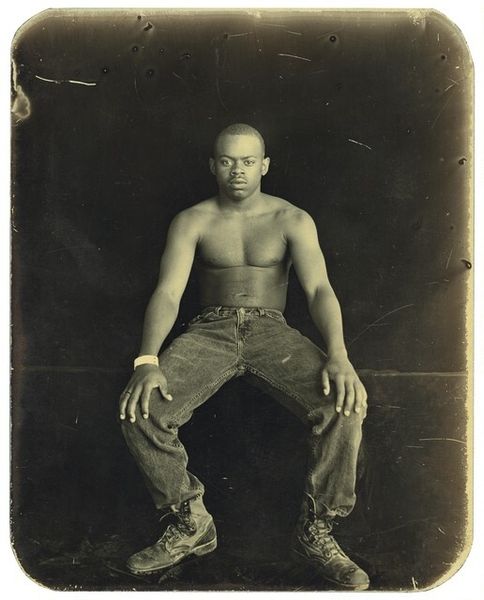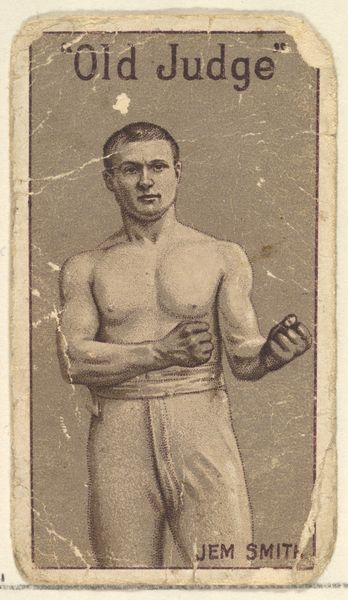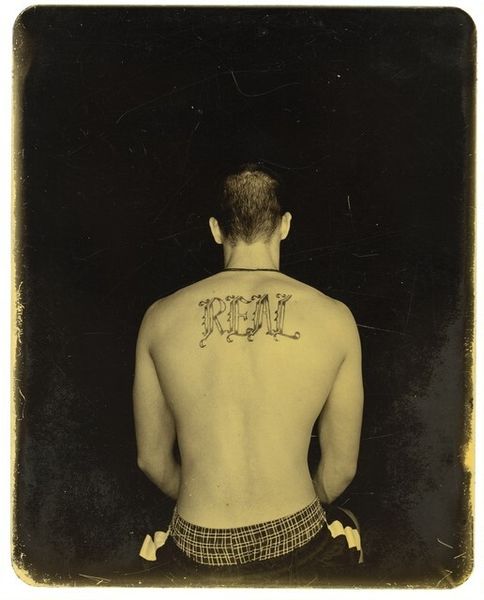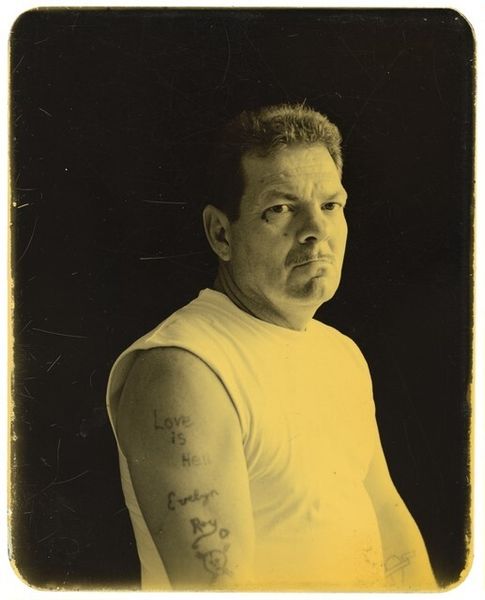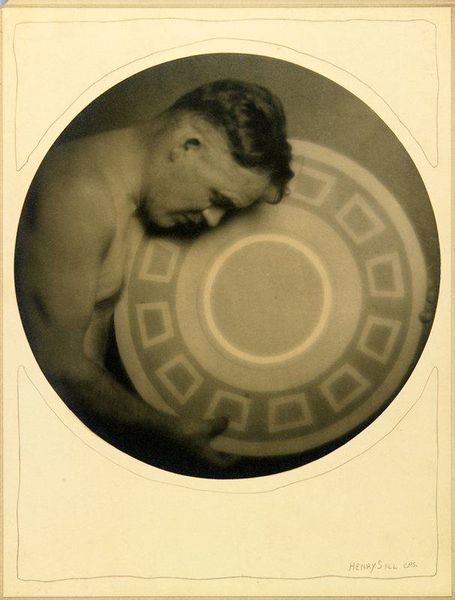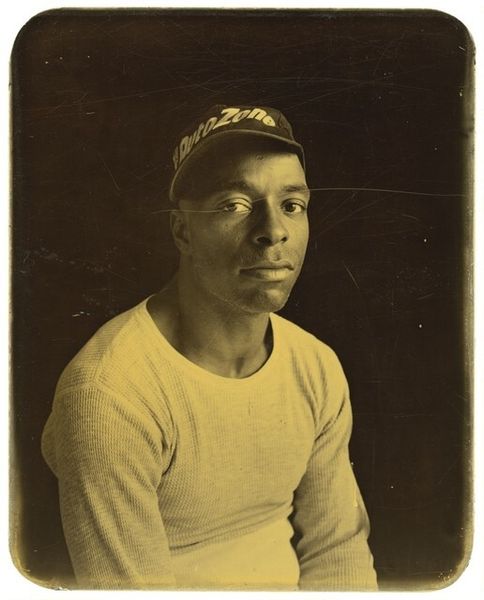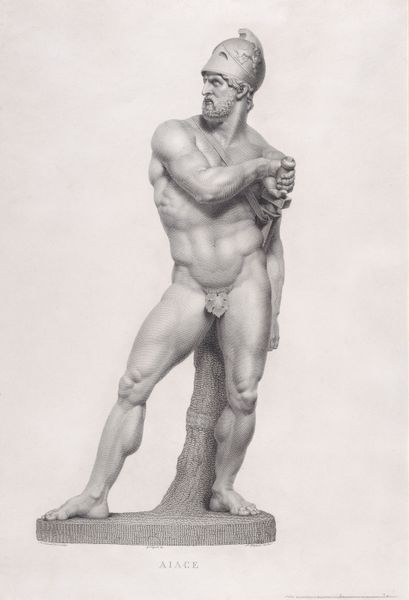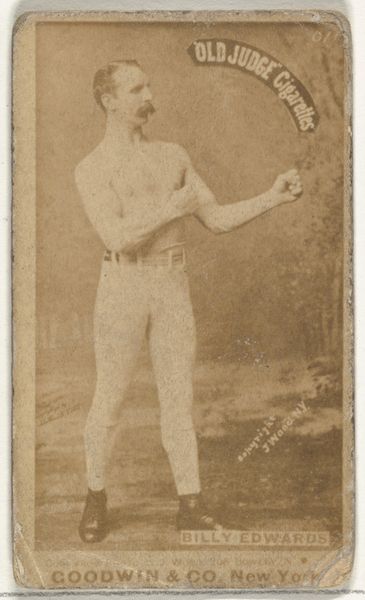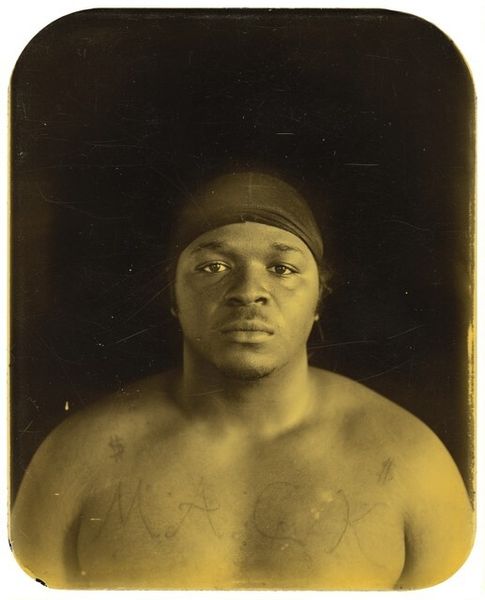
photography, gelatin-silver-print
#
portrait
#
contemporary
#
portrait image
#
figuration
#
photography
#
gelatin-silver-print
#
identity-politics
#
portrait art
#
fine art portrait
#
realism
Dimensions: image/plate: 12.6 × 10 cm (4 15/16 × 3 15/16 in.)
Copyright: National Gallery of Art: CC0 1.0
Curator: Deborah Luster’s gelatin-silver print, “Dane Donley, Transylvania, Louisiana,” created in 2000, captures a striking portrait of a young man. The octagonal framing feels almost archaic, like an old tintype. What are your initial thoughts? Editor: There's a vulnerable rawness that’s immediately apparent. The stark simplicity of the background contrasts with his partially unclothed figure, bringing forth considerations around masculinity, vulnerability, and maybe even exploitation in a rural setting. Curator: Absolutely. The setting of Transylvania, Louisiana, already conjures a certain mythology. Note how the tattoos function here—a map of Louisiana itself, a cursive inscription—acting as talismans. How do they inform identity? Editor: They become crucial. These tattoos situate him not only geographically but culturally. He’s claiming ownership of his identity in a place like Transylvania. We are seeing his story visually inscribed upon his body. What’s compelling here is considering this visual inscription in the broader political and economic context of the rural South. Curator: The "contemporary portrait" classification here feels somewhat insufficient. The work seems to transcend mere documentation. There’s a deliberate harkening back to earlier photographic portraiture. Even the toning feels antique, invoking the melancholic beauty of lost eras and ways of life. Editor: Right, and I think we must interrogate this idea of “realism.” Luster presents this as an unvarnished representation of lived experience. What gets revealed when this image circulates in spaces very removed from its original context? How might our own biases affect the reading? The contemporary framing asks a question of representation that extends beyond the figure himself. Curator: An image can be both immediate and enduring; “Dane Donley, Transylvania, Louisiana” evokes time. Luster allows us to see both an individual and cultural memory embedded in one body. Editor: Luster’s choices invite the viewer to look closely. Hopefully they can confront the social frameworks of race and class, complicating the simple story of identity that initially draws us in.
Comments
No comments
Be the first to comment and join the conversation on the ultimate creative platform.
